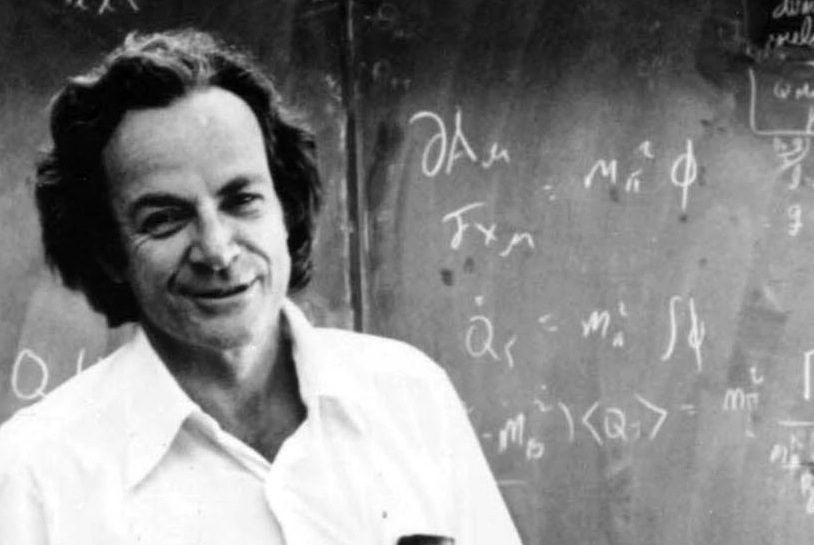I put a camera on a monkey. Here’s how it shook my understanding of humanity
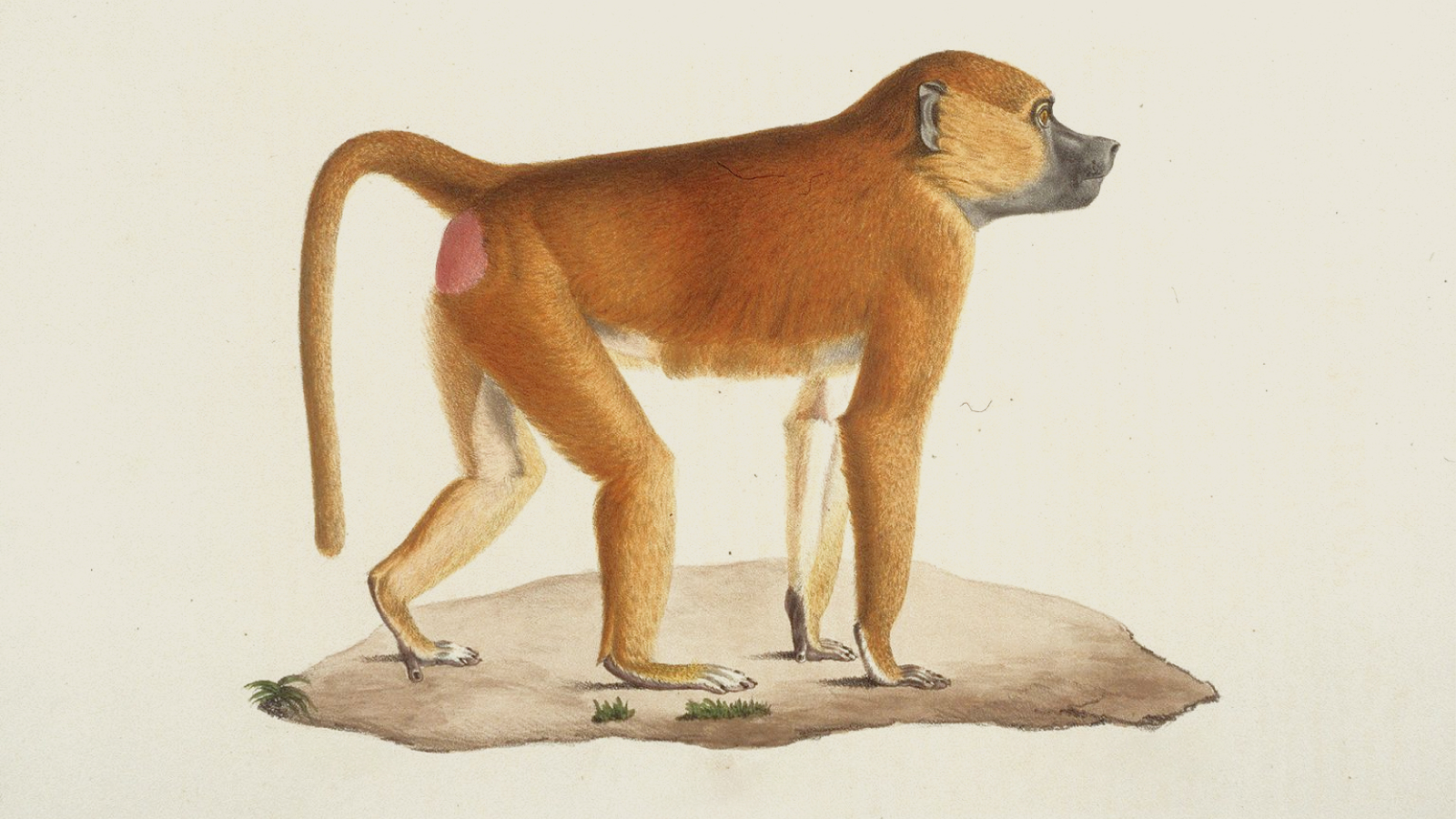
- Awe is a complex feeling. It is a combination of reverential respect mixed with fear or wonder, or an emotion combining dread, veneration, and marvel.
- Humans are not the only animals to experience awe, but our experience of it is distinctive…and profound.
- Awe serves as inspiration and a catalyst for change. We can envision something better, then work to achieve it.
Several years ago, I collaborated with National Geographic on a project attaching HD cameras to macaque monkeys in Gibraltar. The cameras mapped very closely to the monkey’s gaze direction and head/body position. Once we had recovered the cameras, the footage revealed almost perfectly what the monkeys were doing. We “saw” through their eyes.
A shared experience of awe
A female barbary macaque monkey named Sylvia stopped feeding, moved to the edge of the cliff, and sat down. Being that she was near the top of the rock of Gibraltar, facing south, the view was amazing. It was “golden hour.” The monitor filled with the Strait of Gibraltar in the center, golden rays bouncing off the water, and the mountain, Jebel al Musa, the other pillar of Hercules, rising from the tip of North Africa touching the expanse of a deep blue and reddening sky. It was possibly the most beautiful image I had ever seen.
Then Sylvia shifted, adjusting her body and gaze, and sucked the breath out of my lungs. For the next few minutes she sat, and I sat with her, transfixed by one of the most awe-inspiring panoramas I (we?) had ever seen. Then, without much ado, she turned and headed back down the cliff face to feed on some flowers.
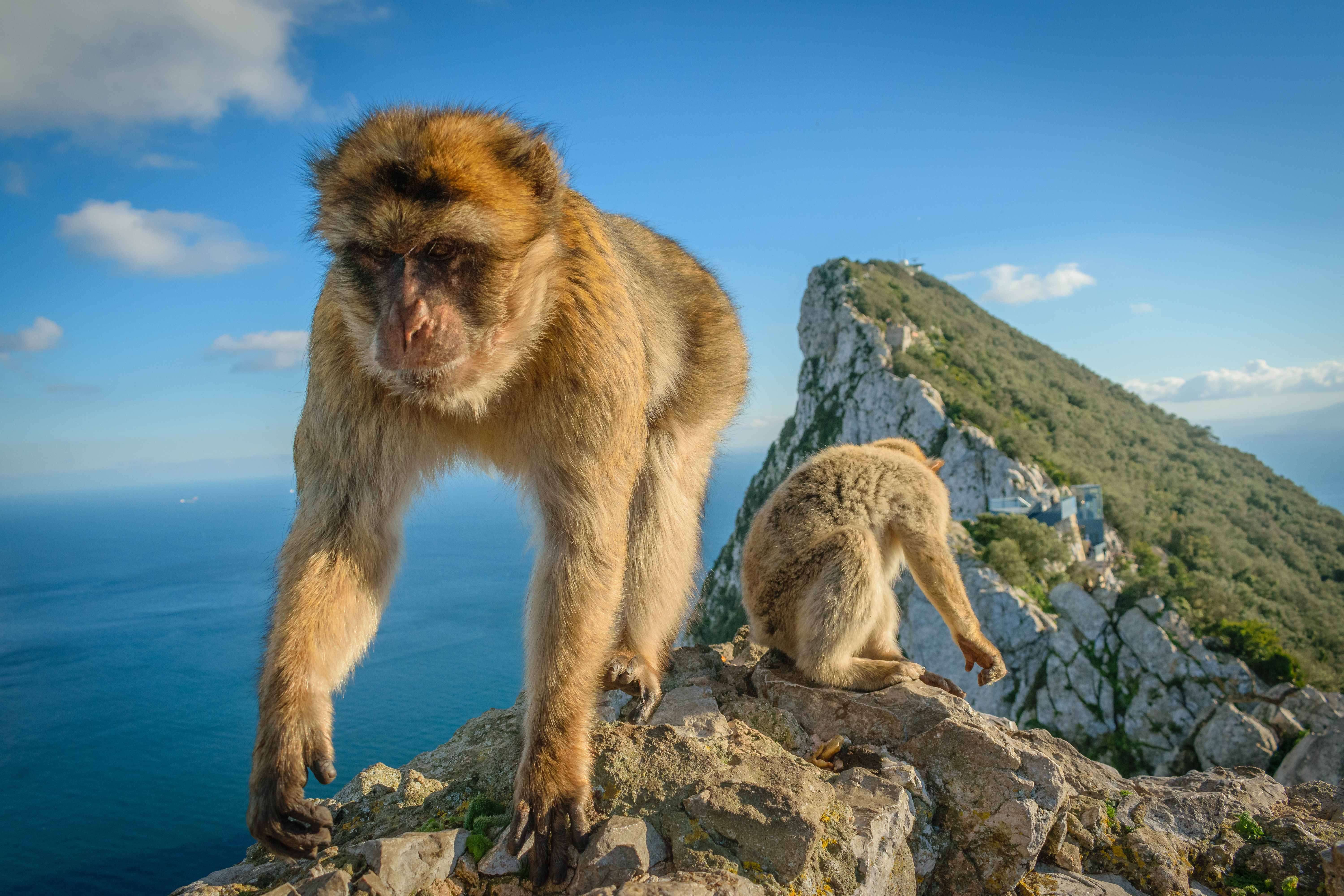
Macaques on the rock of Gibraltar. (Credit: Sam / Adobe Stock)
In those few moments, I am sure Sylvia and I both experienced awe: a powerful physiological and emotional sensation inspired by a perceptually vast, or inordinately striking, stimulus. Awe is not just for humans. There are reports of wild chimpanzees joining a researcher at sunset, watching rapt as the red orb drops below the horizon and of monkeys sharing moments of what looks like amazement with human observers. Other animals exhibit the outward signs of awe in ways we can measure and identify.
They, and we, seem to experience the possibility of being transfixed in wonder by particularly powerful visual and experiential stimuli. But while related visual, neurobiological, and emotional physiologies can make aspects of the experience of awe similar across mammals, for humans the outcomes of that awe can be quite distinct.
My immediate thoughts after the moments of awe with Sylvia involved painting, poetry, music, environmentalism, and the burning desire to share the sensations with others. Over the years, the experience stuck, driving me to reconsider much I had learned and to shift aspects of my research program. It changed my science.
I cannot truly know, but I do not think Sylvia walked away with the same impressions and urges. And therein lies something especially interesting about being human. For us, awe is not just the emotional response to strikingly vast or powerful stimuli but also an experience that can challenge our current frames of reference, how we “see” the world. It can cause us to rethink our understanding of reality and our place in it.
For humans, awe is not just the moment of connection with something more than ourselves.
Awe pulls us away from our brain’s constant self-referential functioning, the processing of stimuli based on previous experience via our own bodies and minds — even, if just for a moment, self-reflection washes away and we sense a connection to (or better put a “being-with”) more than ourselves.
This effect can be seen in brain scans and is reflected in self-reports. Numerous studies demonstrate that the experience of awe can increase prosocial behavior via enhanced generosity and helping behavior by shifting focus away from oneself and redirecting it toward others. It can increase environmental awareness and facilitate a sense of well-being. The emotional and cognitive impacts of awe can be transformational.
We did it our way
It is not surprising that we share some aspects of awe with other primates. Evolutionary histories connect all life. But, due to the branching pattern of evolution, each lineage is its “own kind of thing.” And humans, for at least the last million years or so, have been our “own kind of thing” in a very distinctive way.
Early humans began reshaping the world around them via the creation of complex stone, bone, and wood tools. Seeing, inside a stone, a multitude of shapes and possibilities and working that stone to create a new form, a new instrument, is something no other organism on this planet had, or has, ever done. And these behaviors, alongside increasingly complex modes of communication and collaboration, reshaped human brains and bodies.
At the same time, our ancestors began to explore new lands, spreading across much of the planet, overcoming enormous challenges and experiencing countless new sights, sounds, and sensations — remodeling our sensory and imaginative capacities.
By at least 300,000 years ago, our ancestors treated their dead, on occasion, with reverence. They began crushing colored minerals and plants and mixing them with water, creating pigments they applied to bodies and tools. Soon thereafter, they started painting on cave walls and shaping stone and bone into wonderous figurines of animals and people.
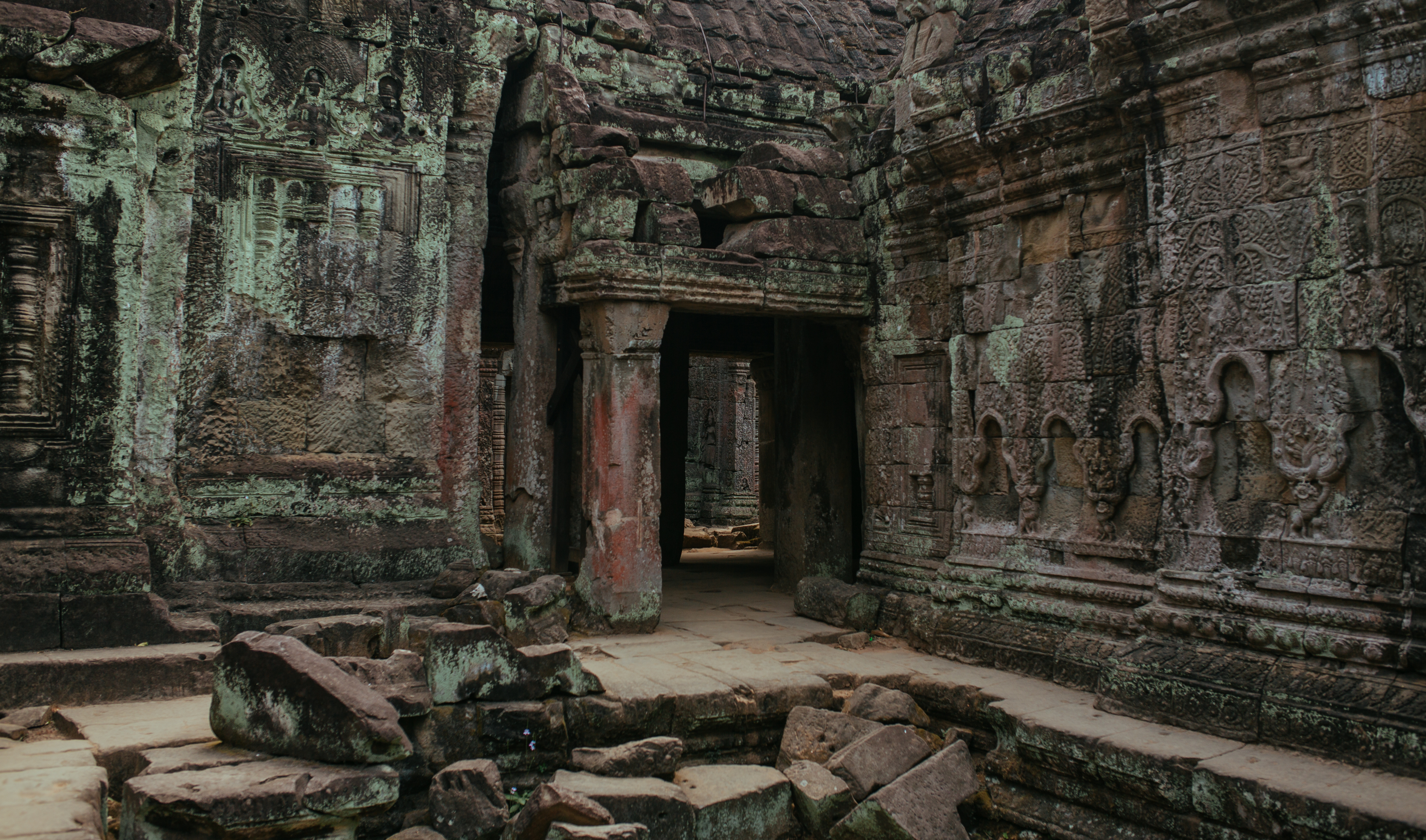
Cambodian Acient Murals and cave paintings on Agkor Wat temple walls. (Credit: Vivid Cafe / Adobe Stock)
Over the last 30 millennia, humans began to apply these creative and imaginative skill sets intensively to the world itself, leaving remarkable material traces and infusing meaning everywhere. Humans reshape plants, forests, animals, the surface of the planet, and ourselves in amazing, radical, and at times horrible, ways. This is the human niche, our way of “being” in the world.
Awe as a catalyst
This niche evolved as a system that entangles brains, bodies, and societies with the world around us, inserting and extracting meaning into and from everything. It is not surprising that the human response to awe is not confined to the moment of experience. Reflection on the experience of awe can act as a shock to the system, causing us to know and feel that “other things” are possible.
Awe initiated by an avalanche or a lightning strike could have played a role in pushing the imaginations and perceptions that played out in the creation of stone tools or in the experiments with capturing fire. The lasting images of sunsets from coastlines, far-off mountains, volcanic eruptions, and the “movement” of the moon, sun, and stars may have played roles in stimulating the migration across uncharted landscapes by our ancestors. The particulars of human biology, evolutionary histories, and culture combine to offer a distinctive role for awe as a catalyst in acts of creativity, imagination, and change.
Awe can cause us to rethink our understanding of reality and our place in it.
Today, awe is argued to be central, even causal, as a stimulus for religion, great scientific achievements, and magnificent works of art. Walking into the Cathedrals of Toledo or Cordoba in Spain, or entering the Blue Mosque in Istanbul, often inspires a deep sense of awe, reaffirming faith or creating it anew. The discovery of the atom, the theory of relativity, the structure of DNA, and that whale song reaches across miles enabling cetaceans to “see,” “feel,” and share the ocean all were likely influenced by moments of awe that inspired scientists to move beyond the here and now to imagine and create a new possibility for knowing the world. The majesty of the Grand Canyon, the intensity of the Amazonian rainforest, and the shores of Antarctica often inspire passion that emerges in painting, music, and prose.
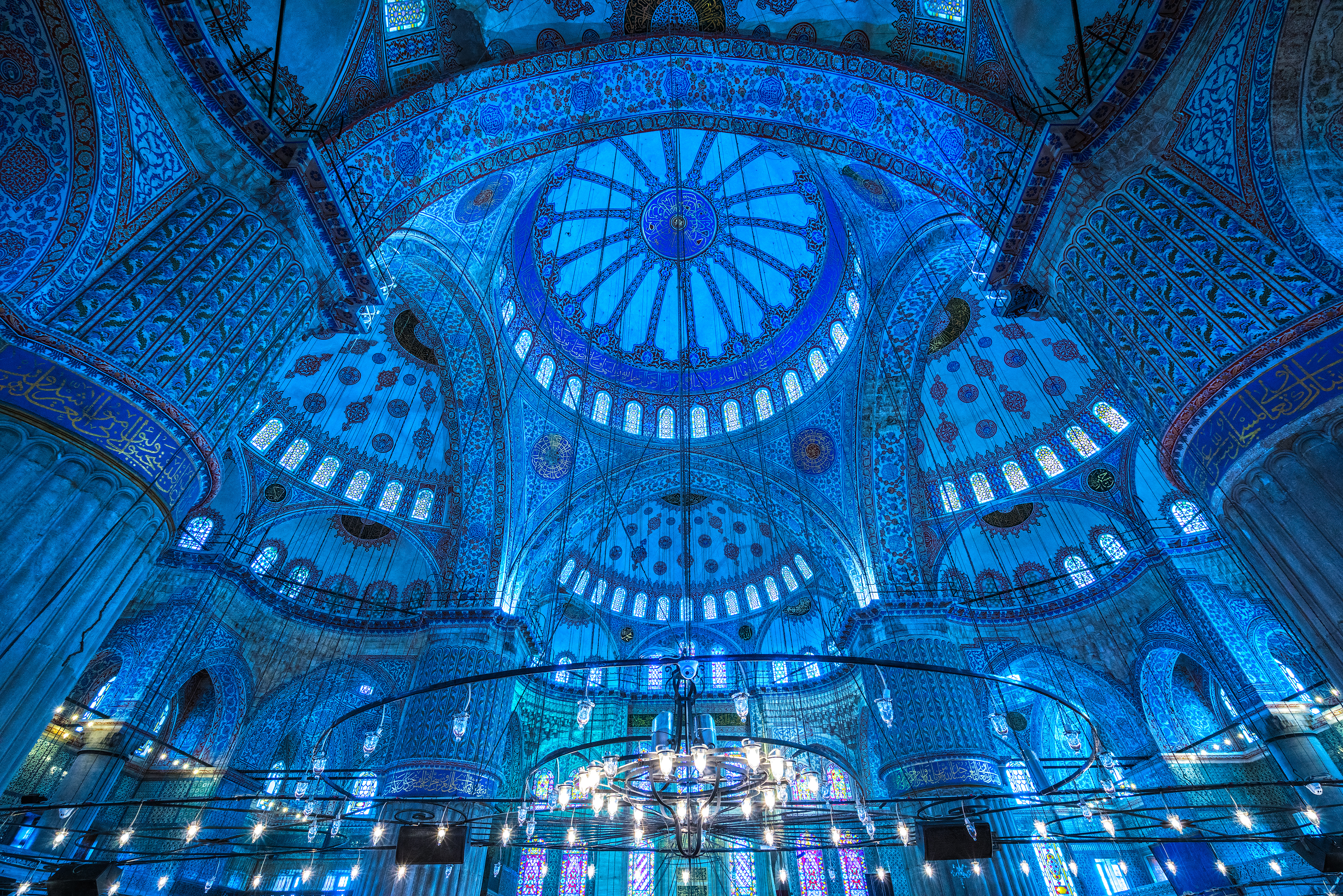
Inside The Blue Mosque, (Sultanahmet Camii), Istanbul, Turkey. (Credit: Luciano Mortula-LGM/ Adobe Stock)
The biocultural origin of awe
Our response to awe is not magical; it is biocultural. Humans evolved a particular manner of coming into the world that sets the stage for awe to have its effect on us. Human children have the longest childhood of any primate. We are born with only about 40% of our adult brain size, meaning that most of our neurobiological development happens outside the womb, in the world.
Humans live in complex and dynamic cultural worlds where meaning and history surround us, and our thoughts, sensations, and actions are shaped by the communities, societies, and ecologies within which we are immersed. Cultural and social experiences are literally embedded in our brains and bodies as they grow. Our sensations of and interactions with the world help structure neural connections and impact the growth of muscles, bones, and even our microbiome.
Our response to awe is not magical; it is biocultural.
By about four years of age, humans begin to show behavioral signs of awe, and over the next few years, that capacity grows and intertwines with the development of a sense of self and the capacity to compare self-representations to powerful events and experiences and abstract stimuli.
Language and human communicative processes and art create an additional layer that makes our experience and use of awe particularly transformative. Awe is experienced as a feeling of reverential respect mixed with fear or wonder, or an emotion combining dread, veneration, and marvel, and humans make it a social reality. For the human, the initial sense of awe is almost never the end of it. We take that experience into our minds as a stimulus and inspiration, and we work with it and attempt to place it back into the world.
Awe, as I shared it with Sylvia, probably occurs in many species. But for humans, awe is not just the moment of connection with something more than ourselves. Awe can be distinctive and transformative because we have evolved as creatures who entangle such experience with imagination, creativity, and culture, and cause it to spill into our social world, potentially changing lives and futures.
Humans evolved a particular capacity to look at the world around us, see it as it is, and imagine new possibilities, new realms, new ways of being — and to at least try to make them a reality. That fact, in the light of our relationship with awe, should both excite and terrify us.




